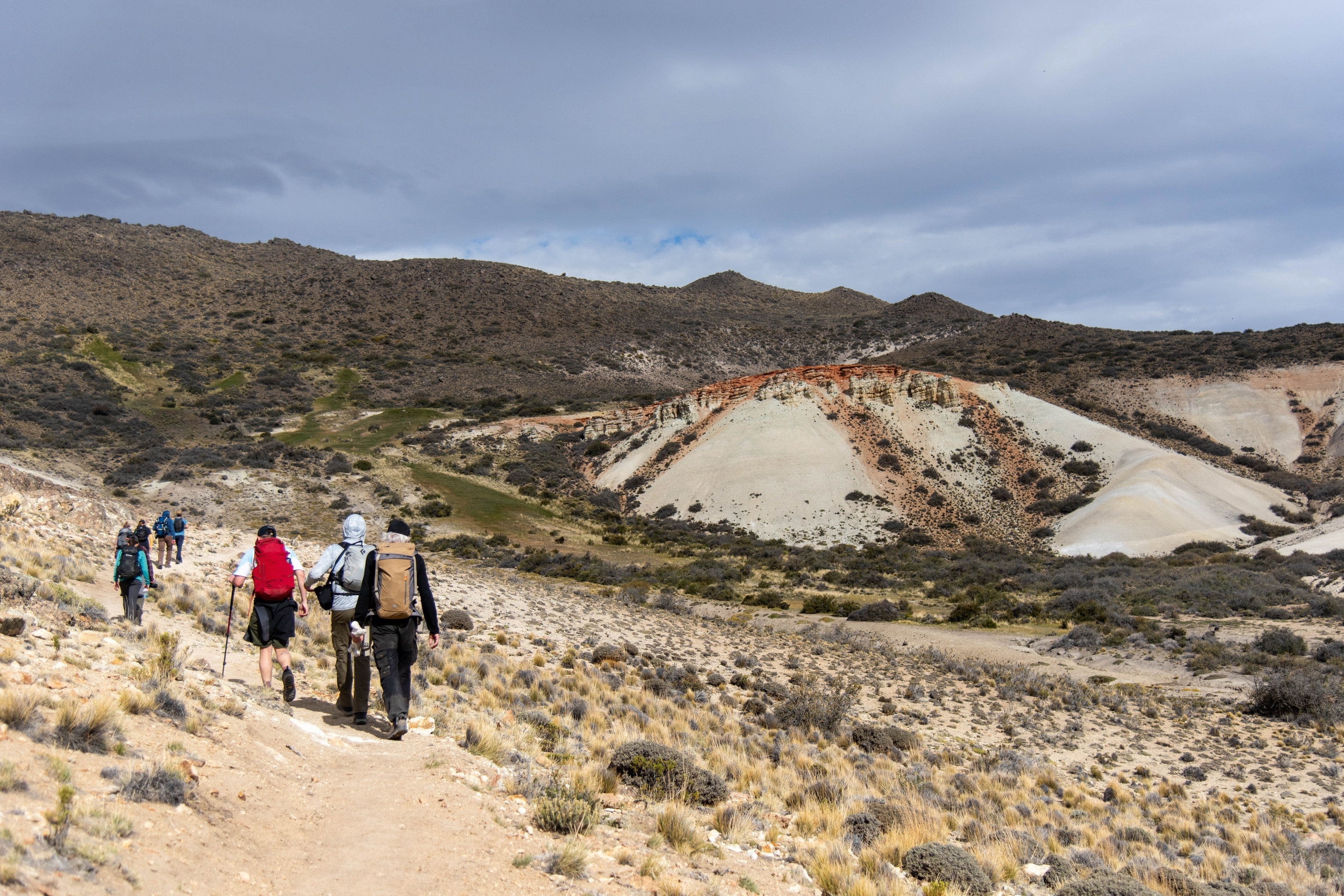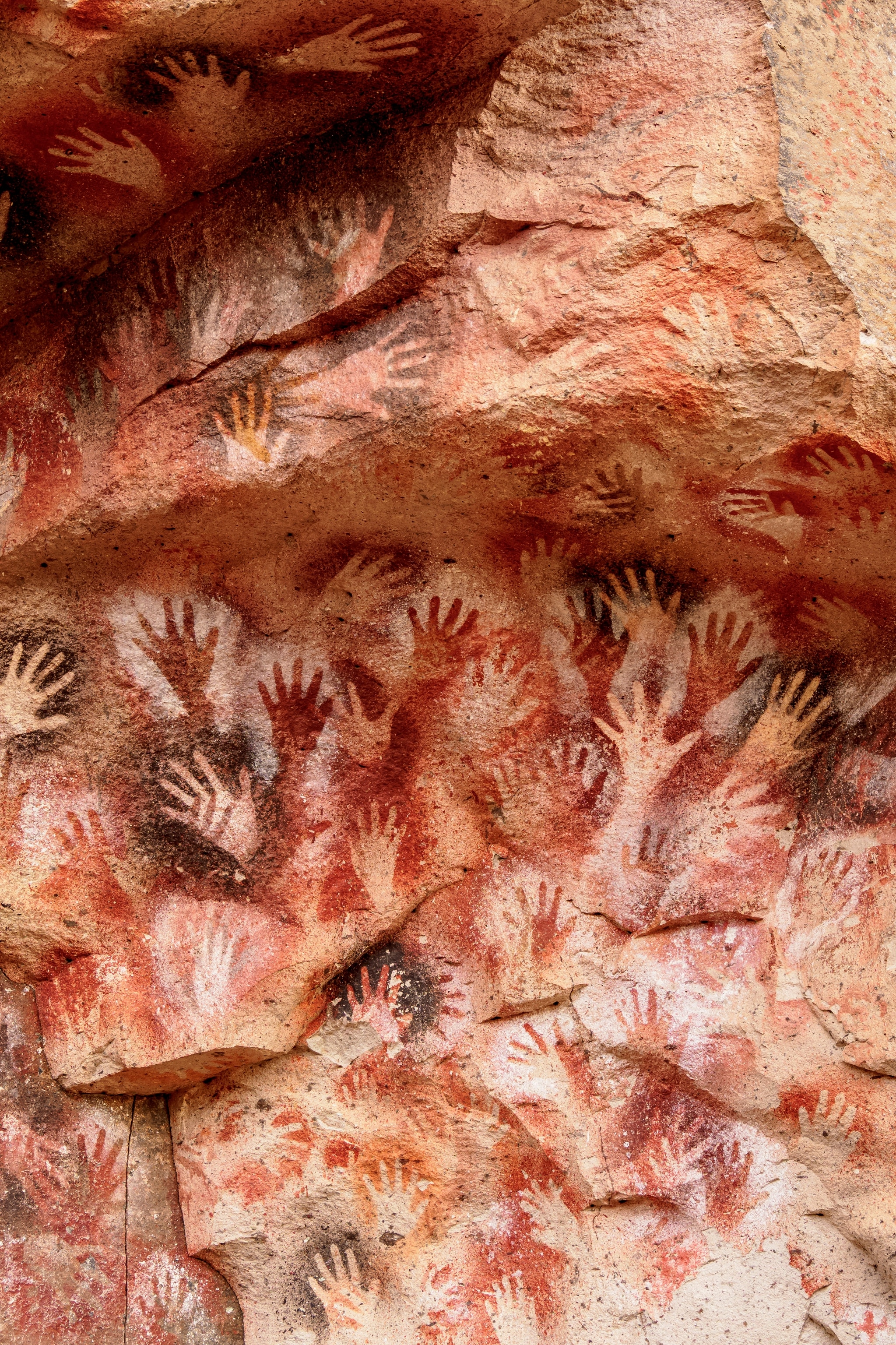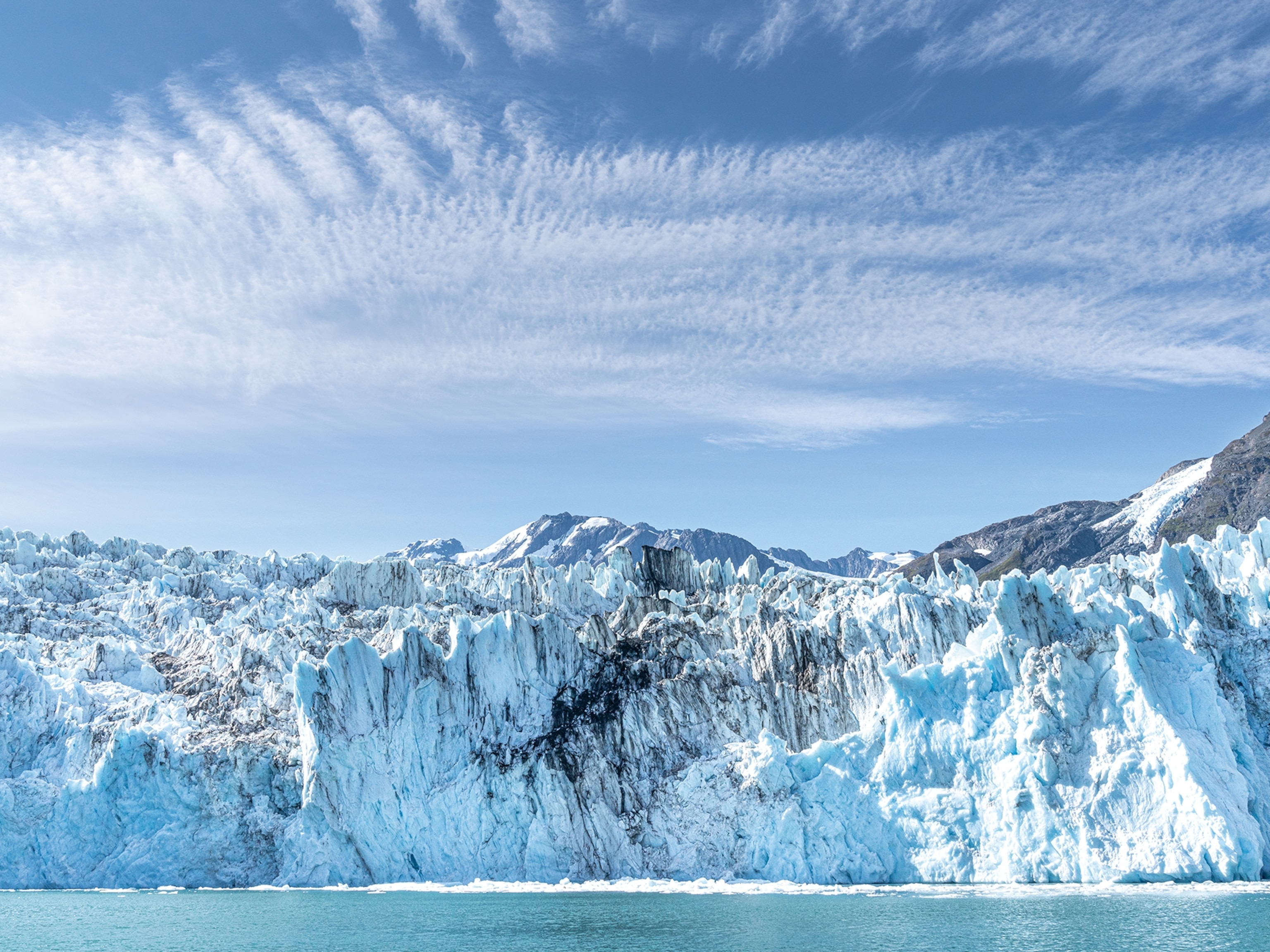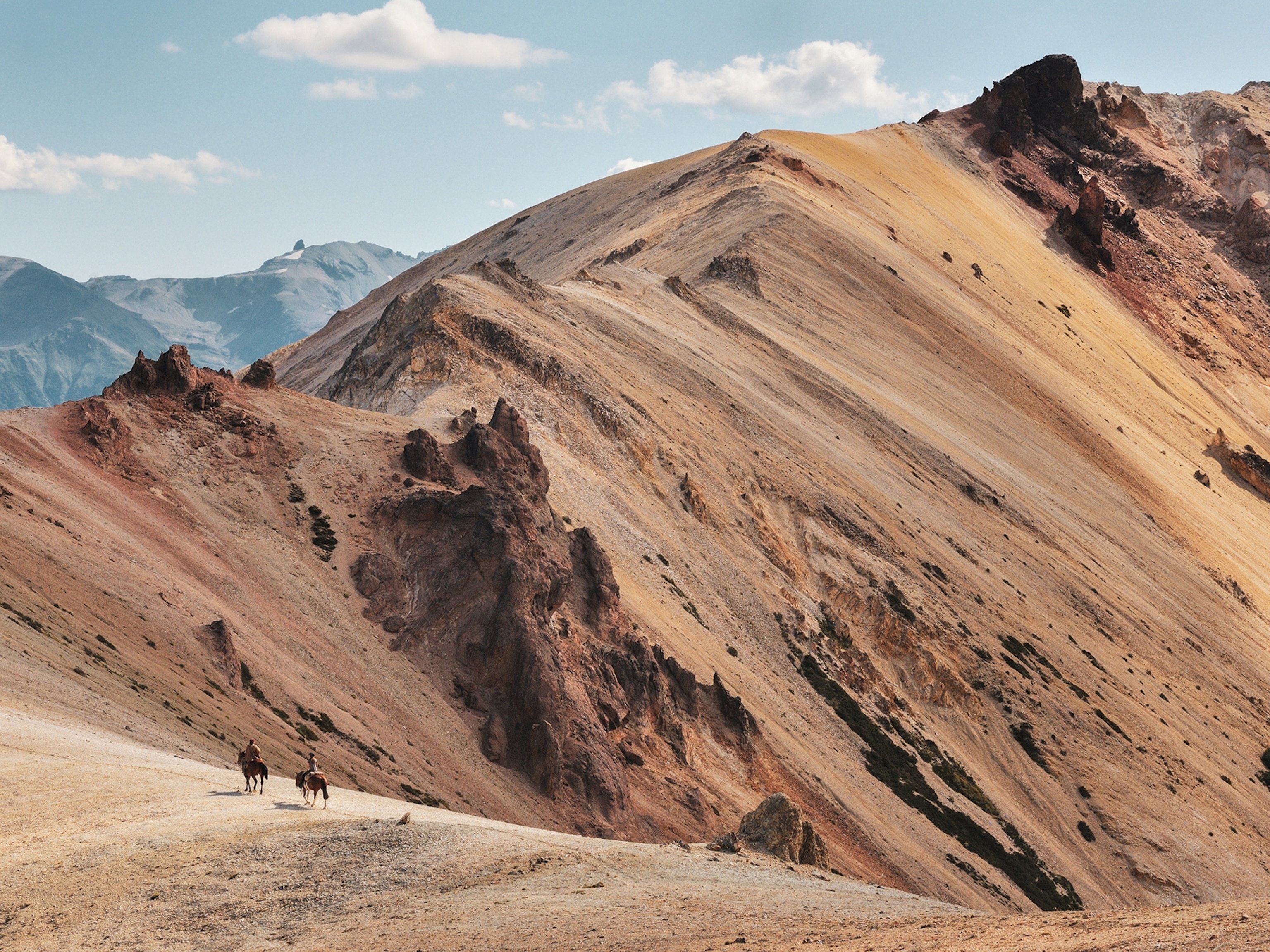
Inside the newest park in Argentine Patagonia
A new park in Patagonia promises plenty of outdoor adventures — and a chance to spot the elusive puma.
Hidden beneath an overhang on steep cliff walls above the Pinturas River Canyon are more than 800 stencilled handprints and painted images of animals. Nobody fully understands why Patagonia’s nomadic hunter-gatherers crafted the graffiti, but we do know they were created around 9,300 years ago using mineral pigments mixed with blood and fat, and that they provide a glimpse of early life in the glacier-carved province of Santa Cruz.
Declared a UNESCO World Heritage Site in 1999, Cueva de las Manos (The Cave of Hands) is a highlight of Patagonia Park, a collection of newly expanded conservation areas in the remote, sparsely populated region. It took me five-and-a-half hours to drive here from the nearest airport, in Comodoro Rivadavia, cruising along empty roads in a landscape of seemingly endless steppe.
Santa Cruz is a place for adventurers and pioneers. In the early 20th century, it attracted hundreds of Europeans fleeing the First World War, hoping to start a new life as sheep ranchers. The eruption of Chile’s Mount Hudson volcano in 1991 ended the dream for many of their descendants, forcing them to abandon their businesses. Since 2012, several of their former farms have been absorbed into Patagonia Park, largely through the work of Rewilding Argentina, a Tompkins Conservation's offspring organisation, founded by American philanthropists Kris and Doug Tompkins, the foundation raises funds to purchase and restore land, with a view to eventually donating it to the government.

“It takes a long time to create a national park,” says Sofía Heinonen, the NGO’s executive director, when we meet at La Posta de Los Toldos refuge close to the park’s Cañadón Pinturas Gateway. A fire blazes inside the cosy inn and education centre, where hikers and conservationists gather with maps at long wooden tables. Outside, guanacos (a type of South American camelid) roam freely, after hundreds of miles of farm fences were recently taken down. In a neat turn of events, many of the weathered wooden posts were used to construct the porchway of La Posta.
At the moment, only around 17,000 tourists visit the park a year. But with the financial support of private charitable organisation The Freyja Foundation, which is working alongside Rewilding Argentina, improvements in infrastructure are likely to attract many more. As well as the refuge, there are five campsites in the park. A 16-mile network of new and repurposed trails has also been built around the Pinturas River Canyon, with more planned.
Aside from Rewilding Argentina’s biologists, one of the only people allowed to off-trail in the park is Facundo Epul. He was born and raised in the Santa Cruz town of Perito Moreno; his father and grandfather both worked on a ranch in the area. “I saw my first puma when I was a teenager, while riding a horse with tourists over the plateau,” recalls the 29-year-old, dressed in a felt boina hat, as we drive through the park in his 4x4. “I didn’t move. I just stopped until he’d walked away and hidden in the rocks. I didn’t tell anyone in case they might catch it.”

Facundo developed an obsession with the big cat and was invited to accompany the Rewilding Argentina team on fieldwork expeditions, learning how pumas like to move, how they hunt, what they like to catch. Now he works as a puma tracker (the first officially designated in Argentina). Currently, 20 collared cats — out of an estimated population of around 100 — are being monitored in the park.
Stepping out of the vehicle close to the Cañadon Caracoles Chicos gorge, Facundo warns me to remain silent and not to pull any zips or Velcro straps — the pumas don’t like the sound, apparently. We locate the tracks of a mother and two cubs sighted earlier that morning. For almost two hours we scramble across dusty ravines and climb to the top of basalt boulders for a better view, gazing over flat mountain plateaus that were once the bottom of lakes. Every so often, we stop to listen for any clues carried on the wind. Unfortunately for us, the cats always seem to be five steps ahead of us.
When we reach the Pinturas River Canyon, Facundo calls off the search. Any feelings of failure are immediately quashed by the enormity of the view ahead of us: a gaping gorge framed by cliffs pockmarked with crevices. “It’s a myth that pumas hide in caves,” insists Facundo, as we eagerly scour the landscape with binoculars.
As if on cue, a glint catches our eyes. The ray of light beaming from a hole in the rock is coming from a radio collar attached to a female puma, who lifts her sandy head from the shadows. Amused by the animal’s ability to outwit him, Facunda admits: “Every day I learn something new.”
Three more outdoor activities
1. Trekking
Dominated by the forbidding granite peaks of the Fitz Roy range, the northern section of Los Glaciares National Park in Patagonia offers some of Argentina’s most exciting trekking. The best base is El Chaltén, a rustic frontier town inside the park near the border with Chile. From here, a series of clearly marked trails leads into Los Glaciares — a UNESCO World Heritage Site — making it easy to explore on your own, although there are plenty of guided tours available. Choose from numerous half-, full- and multi-day hikes, including the spectacular route to and from Laguna de los Tres, which sits at the base of Monte Fitz Roy and, on a clear day, provides a perfect reflection of the imposing peak in its limpid waters.
2. Birding
One of the largest freshwater marshes on Earth, spanning around 5,020sq miles of northeast Argentina, the Iberá Wetlands have undergone extensive restoration and rewilding in recent decades. This swathe of the region — an expanse of rivers, marshes, grasslands and forests — was given national park status in 2018, and the reserve offers unrivalled wildlife-watching opportunities, particularly for birders. Alongside jaguars, capybaras and giant anteaters, there are around 350 avian species — including strange-tailed tyrants, crowned eagles and endangered red-and-green macaws — which are best spotted on boat trips along the labyrinthine waterways.
3. Ice-hiking
A vast wall of blue-white ice gradually advancing into the frigid waters of Argentino Lake, the 97sq-mile Moreno Glacier is one of South America’s most captivating sights. Reached via the town of El Calafate, it can be viewed from a series of walkways and lookouts in the southern section of Los Glaciares National Park, or by taking a boat trip across the iceberg-dotted lake. However, the best way to experience it — while simultaneously indulging your inner polar explorer — is by strapping on a pair of crampons. Guided ice-hiking tours lead you across the striated surface of the glacier, part of the Southern Patagonian Ice Field, which creaks, groans and periodically calves off chunks into the water below.
Rooms at La Posta de Los Toldos cost from US$380 (£303) per night based on two sharing, full board. It operates from November until mid-April.
Fitz Roy Expediciones offers guided treks from US$320 (£264) per person per day.
Say Hueque offers five-day trips to Iberá and the Iguazú Falls from US$1,840 (£1,474) per person.
Hielo & Aventura offers one-day Perito Moreno Glacier hikes from ARS 123,500 (£280).
This story was created with support from the Freyja Foundation and Rewilding Argentina.
To subscribe to National Geographic Traveller (UK) magazine click here. (Available in select countries only).







